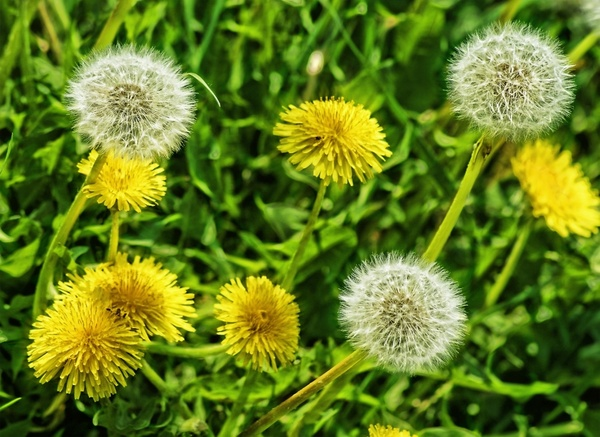By David Wall, Mount Pleasant Master Gardener
Several years ago, I wrote an article on dandelions suggesting they probably weren’t anywhere near as bad as many would have us believe. Dandelions (Taraxacum officinale) have been valued since ancient times for their healing properties. Although this plant has a high overall value, it still can be quite a troublesome aspect for the gardeners.
The dandelion botanical name “Taraxacum officinale” refers to the healing effect. Namely, ‘Taraxacum’ comes from the Greek and means ‘anti-inflammatory’ and ‘officinale’ refers to the common name for herbs. Dandelions are also used to help fight inflammation, depression, boost immune system, act as an antiaging agent in skin care products and even treat type 2 diabetes, cancer, and HIV. Dandelion root strengthens the immune system and kills only diseased cells.
Dandelions are great at adapting. Our Boy Scout Garden one year used tri-clovers (up to 2’ tall) and hairy vetch (over 3’!) for ground cover. I was astounded to see the dandelion flower keeping up in growth to 2’. The flowers might have grown still taller, but by then, I’d picked all of them!
Today, dandelions are used to treat a host of medical problems including promoting food digestion, skin conditions, gastrointestinal tract functions, liver metabolism, cancer (breast, lung, prostate, leukemia, & others) and anemia. The flower surpasses any vegetable in its richness of nutrients. They contain fiber which can reduce the risk of obesity, heart disease and irritable bowel syndrome. They also contain vitamins A, B, C, E, & K; minerals including iron, zinc, calcium, silicon, potassium, and boron, plus sugars, and various acids we need. The entire plant can be eaten. The plant is also an indicator of quality soil, because they do not like poor soil!
Dandelions are in testing for lowering cholesterol, lowering blood pressure, and helping with weight loss!








